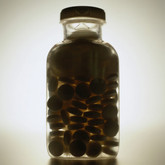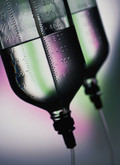Biosimilars
Amphastar and Watson launch biosimilar enoxaparin
US generics manufacturer Watson Pharmaceuticals announced on 26 January 2012 that Amphastar Pharmaceuticals and Watson had been granted their request for a stay of the preliminary injunction preventing the companies from marketing or selling Amphastar’s enoxaparin sodium injection.
Sandoz starts phase III trials for biosimilar filgrastim and pegfilgrastim
On 19 January 2012, Sandoz, the generic drug division of Swiss drug giant Novartis AG, announced that it had started two phase III clinical trials, one for biosimilar filgrastim (Amgen’s Neupogen) for the US market and the other for its global pegfilgrastim (Amgen’s Neulasta) development programme.
Physician perceptions of generics substitution
How do physicians perceive generics substitution? Many patients do not communicate with their physicians regarding out-of-pocket expenses or medication choices. Therefore, understanding physicians’ perceptions about the quality and efficacy of generics could help to identify potential barriers to increasing the use of generic drugs [1].
Roche encounters manufacturing issues with epoetin-beta
The Spanish regulatory agency has found deviations in the quality of the manufacture of Switzerland-based F. Hoffmann-La Roche’s biological anaemia treatment Mircera (methoxy polyethylene glycol-epoetin beta), a long acting erythropoiesis-stimulating agent; and is recommending patients to change to other epoetins.
Relative effectiveness and cost minimisation for biosimilars
The second of two articles on the use of economic evaluations to guide the use of expensive treatment.
Baxter and Momenta make biosimilars deal
Baxter International (Baxter) and Momenta Pharmaceuticals (Momenta) announced on 22 December 2011 that they had entered into a global collaboration agreement to develop and commercialise biosimilars.
Top developments in biosimilars during 2011
Over the past year, a lot has happened in the biosimilars industry.
Amgen finally jumps on biosimilars bandwagon
Biotech giant Amgen and US generics manufacturer Watson Pharmaceuticals (Watson) announced on 19 December 2011 that the two companies had agreed to collaborate on the development and commercialisation of several cancer antibody biosimilars.
Hospira starts phase III programme for biosimilar erythropoietin
Hospira, self-proclaimed leader in injectable generics, announced on 9 January 2012 that the company had enrolled the first patient in its phase III programme in the US for its biosimilar erythropoietin (EPO).
India at the biotech crossroads
‘Indian biotech is at a crossroads. It must not only address the significant health needs of its domestic population, but also position itself to take advantage of the often more profitable global marketplace.’ [1]













